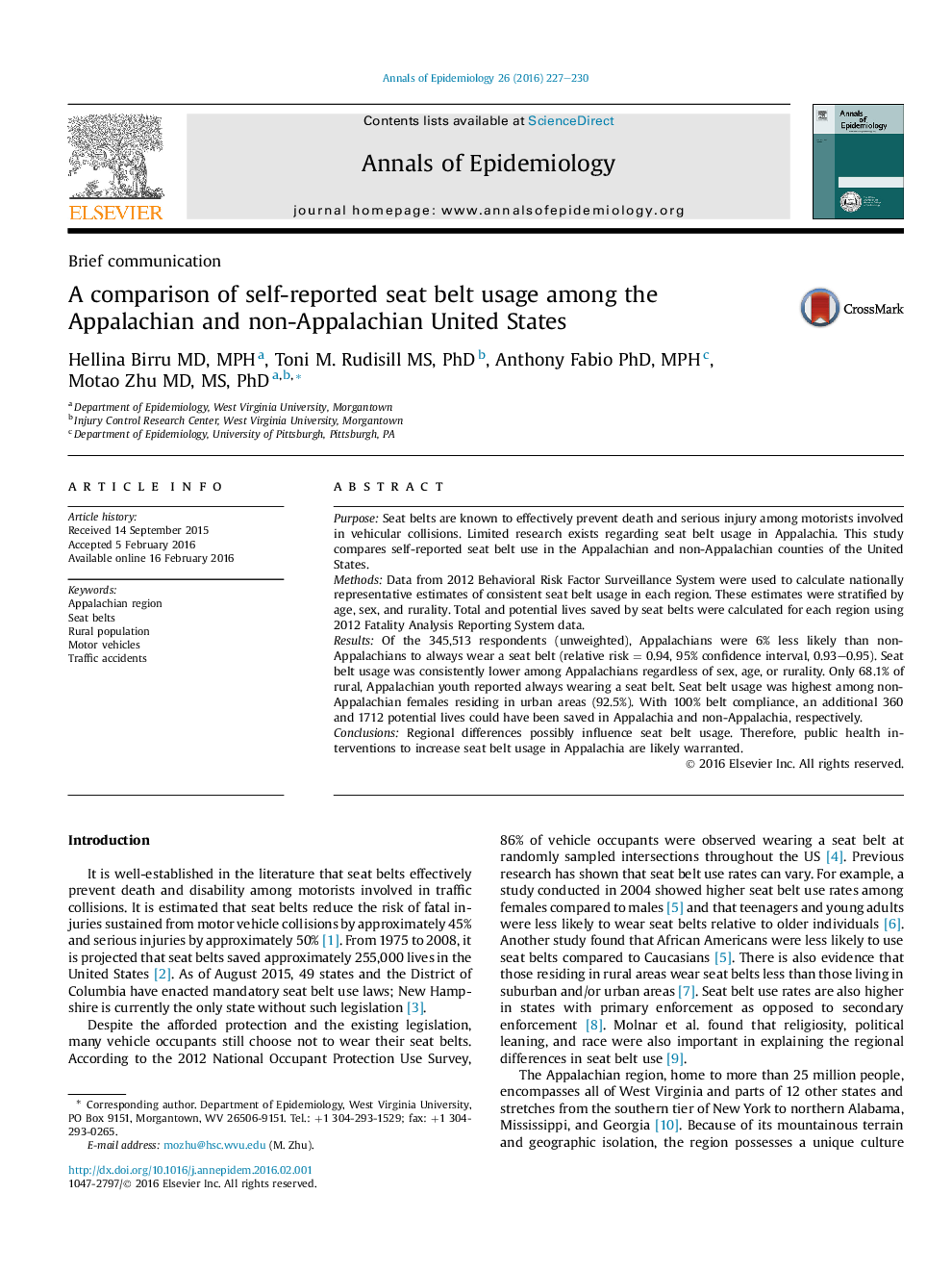| Article ID | Journal | Published Year | Pages | File Type |
|---|---|---|---|---|
| 3443660 | Annals of Epidemiology | 2016 | 4 Pages |
•Regional differences possibly influence seat belt usage.•Appalachians were 6% less likely than non-Appalachians to always wear a seat belt.•Seat belt usage was lower among Appalachians regardless of sex, age, or rurality.•Only 68.1% of rural, Appalachian youth reported always wearing a seat belt in 2012.•With 100% belt compliance, 360 more lives would have been saved in Appalachia in 2012.
PurposeSeat belts are known to effectively prevent death and serious injury among motorists involved in vehicular collisions. Limited research exists regarding seat belt usage in Appalachia. This study compares self-reported seat belt use in the Appalachian and non-Appalachian counties of the United States.MethodsData from 2012 Behavioral Risk Factor Surveillance System were used to calculate nationally representative estimates of consistent seat belt usage in each region. These estimates were stratified by age, sex, and rurality. Total and potential lives saved by seat belts were calculated for each region using 2012 Fatality Analysis Reporting System data.ResultsOf the 345,513 respondents (unweighted), Appalachians were 6% less likely than non-Appalachians to always wear a seat belt (relative risk = 0.94, 95% confidence interval, 0.93–0.95). Seat belt usage was consistently lower among Appalachians regardless of sex, age, or rurality. Only 68.1% of rural, Appalachian youth reported always wearing a seat belt. Seat belt usage was highest among non-Appalachian females residing in urban areas (92.5%). With 100% belt compliance, an additional 360 and 1712 potential lives could have been saved in Appalachia and non-Appalachia, respectively.ConclusionsRegional differences possibly influence seat belt usage. Therefore, public health interventions to increase seat belt usage in Appalachia are likely warranted.
